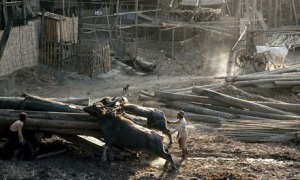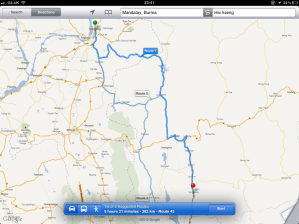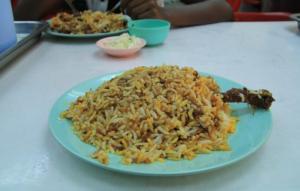As I head south towards Hsi Hseng I get to sample a little local village life in the small, forest settlements. Firstly, nobody speaks English here, and none of the road signs have anything but Burmese on them, which I don’t know. I have to cross the mountains and the roads are adequate, but gravel-based, which is a little slower than I would like. It’s funny. When I move onto asphalt road, or more often in this area, concrete, I can put my foot down a little, which is good for the soul. Don’t expect to get anywhere quickly coming this way, as the roads are often little more than single file earth or gravel tracks.
After about an hour or so I drive past Gwebin, a village off the mountain track, which has the rather impressive name of Highway 311, but it’s not much more than a country lane in most parts. This area is well known for its ruby and sapphire mining, and there are signs of this all over the place. Gwebin had a moment of fame in 1929, when a sapphire was discovered by a group of labourers weighing in at 958 carats. It was later sold to a New York dealer for $13,000. That’s a kings ransom in these parts. Like all of the villages in this area of Burma, it was occupied by the Japanese army during the Second World War.
Burma has a very successful forestry export business and supplies 80% of the world’s teak. There are major concerns in the shear amount of deforestation that is going on in this country.
 |
 |
Once over the mountains I drop down and along the range to my right. A winding road takes me right through the village of Indaw, which sits on the side of the Indaw lake. The houses are neatly arranged and more modern than I would have expected. Indaw had two airfields during the Second World War, but only one seems to be here now. Indaw was the scene of one of the decisive battles between Japanese and British forces during 1944. The Japanese had developed the two airstrips, one in its current place and one on the shore of the lake, and used it to stage attacks in the area. During 1944, the Long Range Penetration groups of the British army, trained to cause maximum disruption to the invading army, attacked Indaw on March 26th, but were met by 2,000 Japanese troops all dug in and waiting for them. 9,000 troops were dropped into north Burma, and played a decisive action in pushing the advancing Japanese army back.
By the time I arrived in Hsi Hseng, I was hot and tired. It is not as humid as I thought it would be, but a temperature of around 27c. I am promised a cooler night tonight of about 11c.
I go to an open food store and choose two dishes I like the look of. One if Vada, a lentil doughnut and looks like a really nice meal in itself. The second is a biryani called ‘dan pauk’. Biryani is to the Burmese what a cheeseburger is to Americans, so I have to try it.



